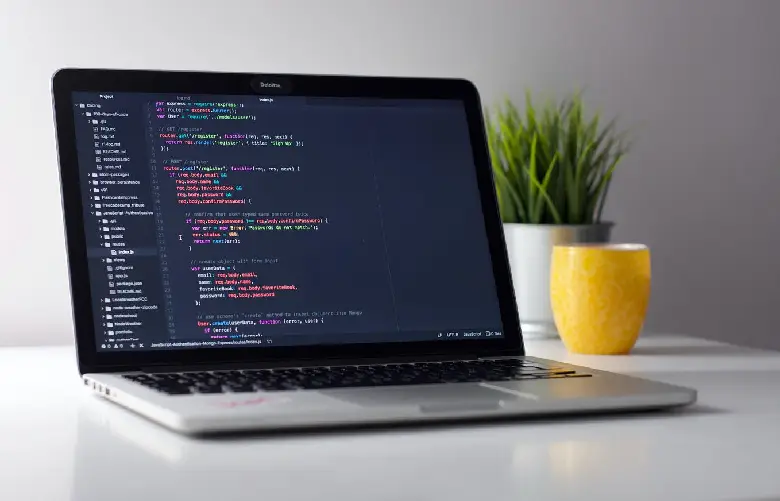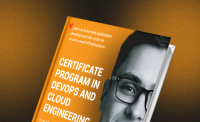An application makes any project intuitive, whether it’s a web app or a PC app. This article teaches you how to create desktop applications using Python programming GUI.
Learning the principles of Python, some OOPS concepts, and the Tkinter in Python can help you construct a range of desktop applications. The Python GUI (Graphical User Interface) module makes it simple to construct desktop applications.
This article serves as a guide to Python GUI in detail. However, we suggest taking the Business Analytics and Data Science course on HeroVired to deepen your understanding of desktop app development.
Overview of Desktop Python GUI Applications
An application with Python GUI (Graphical User Interface) is one developed using graphical elements like dialog boxes, menus, windows, and additional features facilitating user engagement.
A Python GUI application’s executable file with start-up code is produced during compilation. It’s beneficial to focus on enhancing the user interface, but just as crucial is providing the finest user experience without expending ludicrous amounts of resources in the process.

Want to learn more about Python? Read this informative article on What Is a List in Python: Functions with Examples thoroughly!

Get curriculum highlights, career paths, industry insights and accelerate your technology journey.
Download brochure
Benefits and Use Cases of Creating Desktop Gui Applications with Python
Advantages of Using Python GUI To Create Desktop Python Programming Applications:
- Easy to Use: Python programming GUI is an excellent option for beginners intending to build GUI applications, given its simplicity to learn.
- Compatibility Across Platforms: Python GUI applications are a wonderful option for developers who intend to develop programs for a wide audience base because they can operate on Windows, macOS, and Linux.
- Resources in Abundance: It is simple to acquire assistance and learn how to construct GUI applications thanks to the abundance of internet resources for Python GUI development.
Use Cases of Using Python GUI To Create Desktop Python Programming Applications:
- Educational Software: It is one use case for desktop GUI applications made using Python GUI. Python can be used to make interactive, entertaining instructional applications.
- Business Software: Python may be used to build enterprise applications that automate processes and boost productivity.
- Tools for Personal Productivity: Python may be used to develop user-friendly productivity applications that facilitate life organization and increase output.
- Gaming Applications: One can use Python programming GUI to develop gaming applications that are entertaining and unique.
Introduction to Popular Python GUI Frameworks
Programmers, once they complete learning the fundamentals of the Python programming language, experiment with creating a GUI. During that period, they realize a framework is necessary for successful GUI programming. And Python has no shortage of Python GUI application frameworks.
However, the question remains: which Python GUI is the best? Although it depends on your demands and objectives, we have curated a list of the most popular Python GUI libraries/frameworks:
1. Tkinter
The default GUI framework for Python is Tkinter, which uses the Tk library. Tkniter in Python is accessible as open source to all programmers. Also, this Python license covers this GUI library. Tkinter in Python now has plenty of resources. This includes reference materials and codes, all by default, which is one of its many benefits.
Advantages:
- Tkinter in Python is probably already installed if you’re running a current version of Python.
- Tkniter in Python has various widely-recognized widgets, such as checkboxes, labels, buttons, etc.
- It is simple to add code to each widget.
Drawbacks:
- The fundamental widgets of Tkniter in Python are great. However, you should ensure your Tkinter in Python version also supports the full range of Ttk widgets.
2. PyQt
The PyQt package from Riverbank Computing is based on the cross-platform Qt framework, which builds various applications for different systems. This python GUI – PyQt5 package contains a comprehensive set of Python bindings built on the most recent Qt application framework, V5. PyQt5.
It is completely cross-platform. The QtGui & QtDesigner modules offer a variety of aesthetic features that you can integrate with a simple drag and drop.
Advantages:
- Leveraging drag and drop to implement aesthetic components By adding code to visual components, it is possible to create both tiny and large-scale programs.
- Cross-platform compatibility with Windows, Mac, Android, and Raspberry Pi Pip makes installation simple.
Drawbacks:
- Not free at all. You must buy a business license for PyQt5.
- Python is not pre-installed;
- It only supports Python 3
3. PySide
The company that created Qt, a very well-liked application development framework, also created PySide2. If you pay close attention, you’ll see the phrase “Qt for Python Project,” which simply refers to adapting PySide to support Qt5.
Whereas PySide2 is the name given to the framework itself currently. It is currently known as the Qt for Python project’s official cross-platform Python module.
The project gives Python programmers access to a tried-and-true set of tools and frameworks for the swift and adaptable building of fantastic user interface tools available in Qt5 and above. In addition, PySide2 provides developers that need it with strong community support.
Advantages:
- pip makes installation simple
- extensive documentation and help from the community
- Used by well-known businesses like Mercedes
Drawbacks:
- Not pre-installed in Python.
Advanced Python GUI Development Techniques
- To keep the widgets organized, programmers can use layout managers. It is an advanced Python GUI development technique for organizing widgets.
- Programmers can leverage the event handlers technique to make quick and efficient responses to any user input.
- Using motifs & styles to produce a unified and polished appearance.
- Produce a more interactive, appealing, and stunning user interface by adding animation alongside other visual elements.
Testing and Debugging Python GUI Applications
- To ensure that your Python GUI application sets a benchmark for others, you must perform integration, unit, and manual testing.
- Find flaws in your code by stepping through it with a debugger. Thus, finding bugs that are hard to reproduce becomes easier.
- Track the completion of your code by using a logging framework. This can be useful for finding mistakes that aren’t always simple to duplicate.
- Test your GUI program on various hardware and operating systems to ensure its seamless performance on various platforms.
Which Python GUI Framework is Best?
Here is an comprehensive list of all the pointers that will help you better understand the key difference between three major python GUI frameworks:
| Basis |
PySide in Python |
PyQT in Python |
Tkinter in Python |
| Cross-Platform |
Available |
Available |
Available |
| Features |
Number of widgets and features is more than that of Tkinter. |
Same as PySide, only with a difference in implementation. |
Has a standard collection of widgets and features. |
| Documentation |
Great, but it could be more complex. |
Great, but just like with PySide. |
Good, but a little bit outdated/obsolete. |
| Convenience |
The difficulty and complexity of learning are higher than in Tkinter. However, it offers more flexibility and features. |
Just the same as PySide in Python, only with a difference in the way it uses syntax. |
Beginner-friendly as anyone can learn and use it within a few weeks. |
| Community Support |
It has a vast, extensive network of community support, with access to a range of online resources. |
It has large, active community support, with the availability of various resources online. |
The community support for Tkinter in Python is the same as PySide and PyQT, with many resources available online. |
| Performance |
Although it delivers excellent performance, it can perform slower than Tkinter on older versions. |
Just the same as PySide, as it also delivers great performance, only slower than Tkinter in older systems. |
It delivers excellent performance, especially when operated on older systems. |
| License |
Open-source; free (commercial usage requires a commercial license) |
Open-source; free (commercial usage requires a commercial license) |
Open-source; free (no commercial license required) |
Best Practices and Tips for GUI Development in Python
Here are some key tips and best practices to use while using python GUI:
- Give your GUI a comprehensive test. Verify that your GUI operates as anticipated and is appropriate for each platform you plan to support.
- Leverage only the most renowned and widely used Python GUI framework. With such a Python GUI, one can effortlessly locate resources and ensure that your application will remain interoperable within a range of platforms.
- Think about the user when creating your Python GUI. Ensure the GUI is simple to use and comprehend and that it offers consumers a basic, easy way to engage with your application.

Conclusion
In this article we have covered everything about python GUI in detail. Python is lucrative in whichever field you choose to work in. So, hopefully, you now understand Python GUI programming applications and what makes it different from other programming languages. To learn more, check this article on the Top 10 Python Libraries You Must Know.
FAQs
The Python GUI Project, sometimes called the PyGUI framework, is a straightforward API enabling programmers to design user interfaces for Python applications utilizing native components. Being a lightweight API, it requires less coding to connect the app to the target platform than many other frameworks on our list, making it significantly more effective.
Python GUI is significant because it enables Python programmers to design intuitive user interfaces for their programs. People can engage with the application more easily as a result, which can boost productivity and happiness.
You can choose the best Python GUI framework depending on your unique demands and objectives. PySide, PyQt, and Tkinter in Python are the most widely used and trusted frameworks.
Making an attractive user interface, which resonates with you and your users, is now possible, thanks to Python and the PySimpleGUI library!
Updated on December 13, 2024










